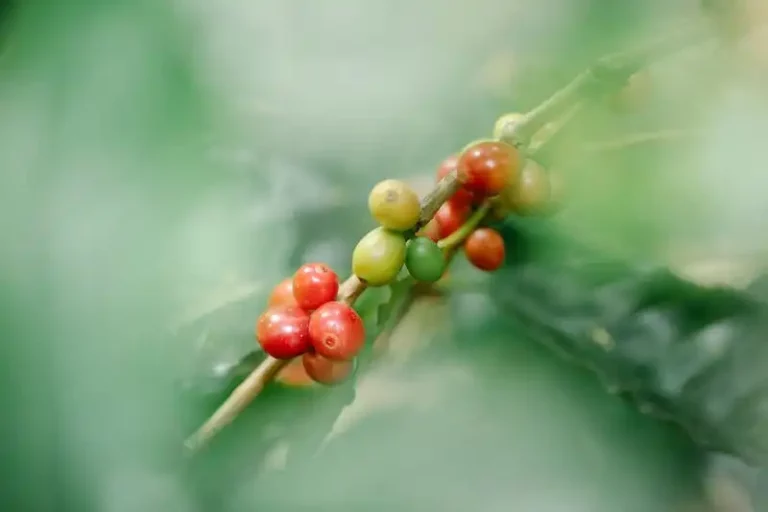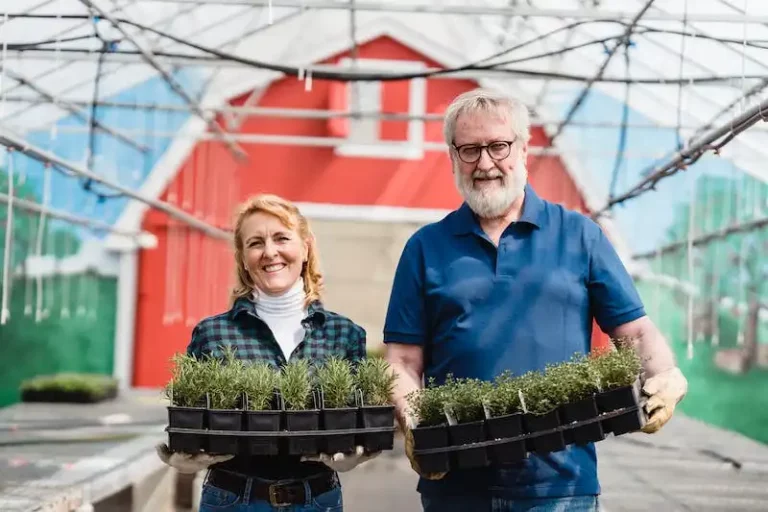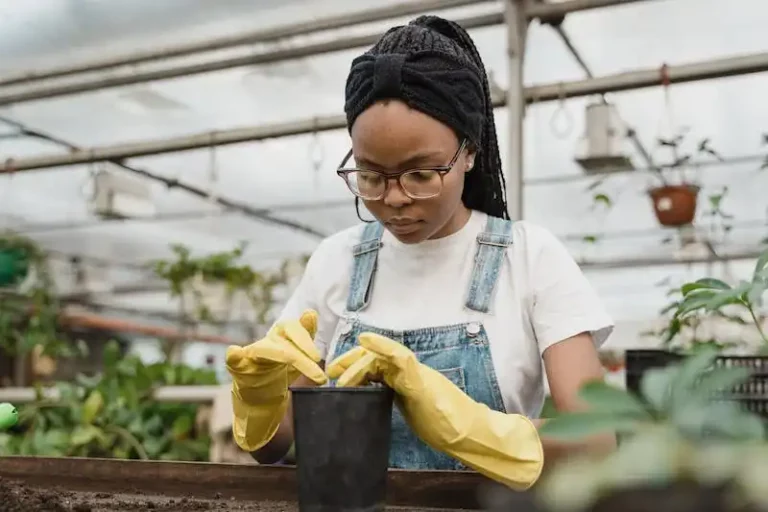Spring onions, also known as scallions or green onions, are a popular vegetable in the kitchen. They add a fresh and mild onion flavor to dishes and are great as garnishes. The good news is, you can easily grow spring onions at home from seeds or by regrowing them from the kitchen scraps. In this step-by-step guide, we will show you how to grow spring onions and how to care for them throughout the growing season.
To start growing spring onions, you will need seeds or a bunch of spring onions from the store. If you are using seeds, you can plant them directly in well-drained soil or in a potting mix. Make sure the soil is sandy and has good drainage. If you are using store-bought spring onions, cut about an inch from the white end and place it in a shallow container with water. Leave it on a windowsill and watch as new shoots start to grow.
Once the seeds or attached shoots have grown into seedlings, it’s time to transplant them to a larger pot or to your garden. Choose a sunny spot where the soil is well-drained and enriched with organic matter or fertilizer. Plant the seedlings or re-grown spring onions in rows, about 4-6 inches apart, with the tips of the onions showing above the soil. Mulch around the onions to retain moisture and suppress weeds.
To care for your spring onions, water them regularly, making sure the soil stays moist but not waterlogged. Avoid overwatering, as it can lead to diseases. Spring onions prefer a temperature range of 50 to 75 degrees Fahrenheit, so ensure they are not exposed to extreme heat or frost. Fertilize the plants every few weeks to promote healthy growth.
Harvesting spring onions is an exciting moment. You can start harvesting when the onion bulbs are a bit smaller than those found in the store, usually around 4-6 weeks after planting. To harvest, gently pull the plants from the soil or use a knife to slice off the roots just below the bulb. You can continue harvesting as needed, and the spring onions will keep regrowing.
Now that you know how to grow spring onions, it’s time to give it a try. With proper care and attention, you can enjoy a bountiful harvest of fresh and tasty spring onions right from your own garden or windowsill.
Written by Sandra Sanderson for Dotdash, adapted and edited by me.
How to Regrow Green Onions From Scraps
Regrowing green onions from scraps is a simple and quick way to enjoy a fresh supply of this delicious vegetable without having to buy seeds or seedlings. Green onions, also known as spring onions or scallions, are a popular addition to salads, soups, and stir-fries. With just a few simple steps, you can have a continuous supply of fresh green onions at your fingertips.
- Start by selecting green onions that still have their roots intact. These can usually be found in the fresh produce section of your local grocery store.
- Once you have your green onions, cut the dark green tops off, leaving about an inch of the white part with the roots. The dark green tops can be used in cooking or saved for later use.
- Place the white part with the roots in a small glass or jar with enough water to cover the roots. Make sure the roots are submerged, but not the white part.
- Put the glass or jar in a sunny spot, like a windowsill, and change the water every few days to keep it fresh. Within a week or two, you should start to see new green shoots growing from the top of the white part.
- Once the new shoots have reached a height of a few inches, you can transfer the green onions to a pot or container with soil. Make sure the pot has good drainage to prevent waterlogging, as green onions prefer well-drained soil.
- Plant the green onions in the soil, making sure the roots are covered and the shoots are above the surface. Space them a few inches apart to allow for growth.
- Water the green onions regularly to keep the soil moist, but not overly saturated. They should receive about 1 inch of water per week.
- As the green onions continue to grow, you can harvest them by cutting off the green tops with a sharp knife or pair of scissors. Leave about an inch of the white part with the roots intact, and the green onions will continue to regrow.
Regrowing green onions from scraps is a fun and rewarding gardening project. It not only saves money and helps reduce food waste, but also allows you to have a fresh supply of green onions right at home. Follow these step-by-step instructions and enjoy the benefits of growing your own green onions.
Why regrow green onions
Regrowing green onions from bulbs is a great way to grow more of this delicious and versatile vegetable. Spring onions, also known as scallions or green onions, can easily be regrown from the bulbs that are often discarded.
One of the main reasons to regrow green onions is their quick return. Instead of starting from seed or sowing seedlings, you can simply use the bulbs to quickly grow new plants. This means you can have a continuous supply of fresh green onions without having to wait for the germination and growth of seeds or seedlings.
Regrowing green onions can also save money. Instead of constantly purchasing new bunches of green onions, you can make the most of the ones you already have. By replanting the bulbs and tending to the growing plants, you can harvest fresh greens on a regular basis.
In addition to cost savings, regrowing green onions is also an environmentally friendly practice. By reusing discarded bulbs and allowing them to grow into new plants, you are reducing food waste and minimizing your carbon footprint.
Growing green onions is relatively easy. They can be planted in well-drained soil in a sunny or partially shaded location. The bulbs should be planted about 1 inch deep with the tops of the bulbs just above the soil surface. Be sure to space the bulbs 4-6 inches apart to allow enough room for each plant to grow.
Green onions require regular watering, especially during dry spells, and they should be kept free from weeds. It’s also important to watch out for pests and diseases that may appear and take appropriate action to prevent their spread.
Thompson & Morgan, a well-known horticultural company, suggests that when the green onion stalks reach a height of about 6-8 inches, you can start harvesting the young onion greens. However, if you prefer larger bulbs, you can allow the plants to grow even longer before harvesting.
In order to keep a continuous supply of green onions, you can harvest some bulbs while allowing others to keep growing. This way, you can have both mature bulbs and young greens at different stages of growth.
Regrowing green onions is not limited to outdoor garden settings. They can also be successfully grown in containers, making them suitable for small spaces, such as balconies or kitchen windowsills. Just remember to select containers with good drainage and use well-drained soil.
If you have leftover green onions from the grocery store, you can even regrow them from the white parts. Simply place the white bulbs in a container with water, making sure the roots are submerged. Keep the container in a sunny spot and change the water every few days. Soon, you will see new green shoots appear, and once they are long enough, you can transfer them to pots or the garden.
Regrowing green onions is a fun and rewarding activity for both novice and experienced cooks. It allows you to have fresh onions whenever you need them, and you can take pride in growing your own food. So, next time you have green onions in your kitchen, consider regrowing them instead of throwing them away.
Written by: Sanderson Thompson
How to regrow green onions
If you love green onions and need a quick and easy way to grow them, you’re in luck! Growing green onions from scraps is a simple and satisfying horticultural project that anyone can do. With the right care and a little bit of patience, you can have a continuous supply of fresh, homegrown green onions in no time.
To regrow green onions, you’ll need the following:
| Green onion scraps (leftover roots with a little bit of the white bulb attached) | Wide, shallow container or pot | Good quality potting soil or sandy loam | Water |
Here’s a step-by-step guide to help you with the process:
- Cut off the green leafy part of the green onions, leaving about one inch from the bulb.
- Prepare your container by filling it with well-draining potting soil or sandy loam. The depth should be enough to accommodate the roots and bulb of the green onion.
- Plant the green onion scraps in the soil, making sure the bulb is covered and the green part is above the soil surface.
- Water the soil thoroughly, making sure it’s evenly moist but not waterlogged.
- Place the container in a sunny spot that gets at least six hours of sunlight each day. Green onions prefer full sun for optimal growth.
- Keep the soil moist by watering regularly, especially during dry spells. However, make sure not to overwater, as this can lead to root rot and other diseases.
- Within a few days, you should start to see new growth sprouting from the green onion scraps. These will develop into new green onion plants.
- As the green onions grow, ensure proper spacing between the plants. If they get crowded, thin them out by removing some of the plants, leaving space for the others to grow.
- After a few weeks, your green onions will be ready for harvest. Simply cut the green leafy part as needed, leaving the bulb and roots in the soil to regrow.
By following this simple guide, you can enjoy fresh green onions right from your own home. They make a great addition to various dishes, from soups and salads to stir-fries and garnishes. What’s even better, you can repeat the process as needed to ensure a continuous supply of green onions throughout the growing season.
How to Grow Spring Onions
Spring onions, also known as scallions, are a versatile and easy-to-grow vegetable that can add a delicious flavor to a variety of dishes. Whether you’re a seasoned gardener or a beginner, growing spring onions is a great way to enjoy fresh produce right in your own backyard. In this step-by-step guide, we’ll show you everything you need to know about sowing, growing, and harvesting spring onions.
Selecting the Right Variety
When it comes to selecting spring onion seeds, there are many varieties to choose from. Some popular options include ‘White Lisbon’, ‘Apache’, and ‘Evergreen Bunching’. Each variety has its own unique flavor and growth characteristics, so be sure to read the seed packets or consult a horticultural expert to find the best one for your needs.
Sowing Spring Onions
Spring onions can be sown either directly in the ground or in pots. If you choose to sow them in the ground, make sure to select a sunny spot with well-drained soil. Start by preparing the soil by removing any weeds and adding some organic fertiliser.
Next, create shallow rows in the soil about 20cm apart. Sow the spring onion seeds thinly along the rows, and then lightly cover them with soil. Water the seeds gently to help them settle into the soil.
Care and Maintenance
Spring onions are relatively low-maintenance plants, but they still require some care to ensure healthy growth. Here are some tips:
- Water the plants regularly, especially during dry periods.
- Thin out the seedlings once they reach around 2-3cm in height. This will give the remaining plants enough space to grow.
- Apply a layer of mulch around the plants to help conserve moisture and prevent weeds.
- Protect the plants from frost by covering them with a frost cloth or moving them inside if the temperature drops below freezing.
Harvesting Spring Onions
Spring onions can be harvested at different stages of growth, depending on your preference. Some people like to harvest them when they are still small and tender, while others prefer larger bulbs. Here’s how to harvest spring onions:
1. Start by gently pulling the leaves of the spring onion plant. The young and smaller stalks can be eaten whole.
2. If you prefer larger bulbs, wait until the spring onion has fully matured. When the bulbs appear plump and the outer skin starts to split, it’s time to harvest them.
3. Use a garden fork or trowel to carefully dig up the whole plant, making sure to keep the roots attached.
Once harvested, spring onions can be stored in the fridge for up to a week. They can also be frozen or used to regrow new plants. Simply slice off the bottom inch of the bulb and place it in a glass of water. Within a few days, new shoots will appear, and you can plant them in the ground or in pots to grow fresh spring onions.
Now that you know how to grow spring onions, it’s time to get started. With a little care and attention, you’ll soon be enjoying fresh and flavorful spring onions straight from your garden.
For more step-by-step guides on gardening and other topics, visit Dotdash.com.



